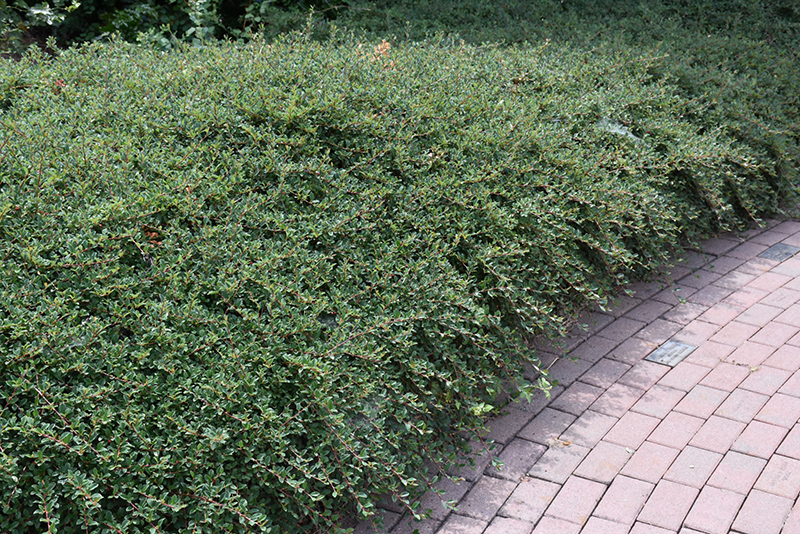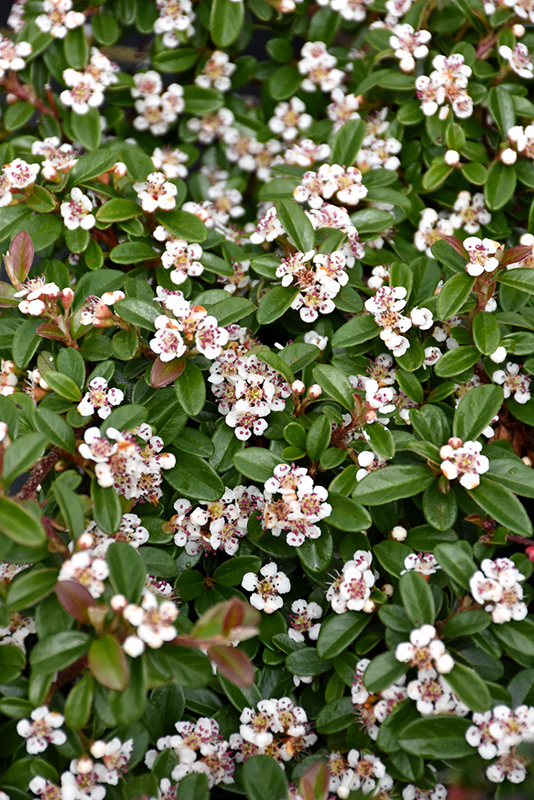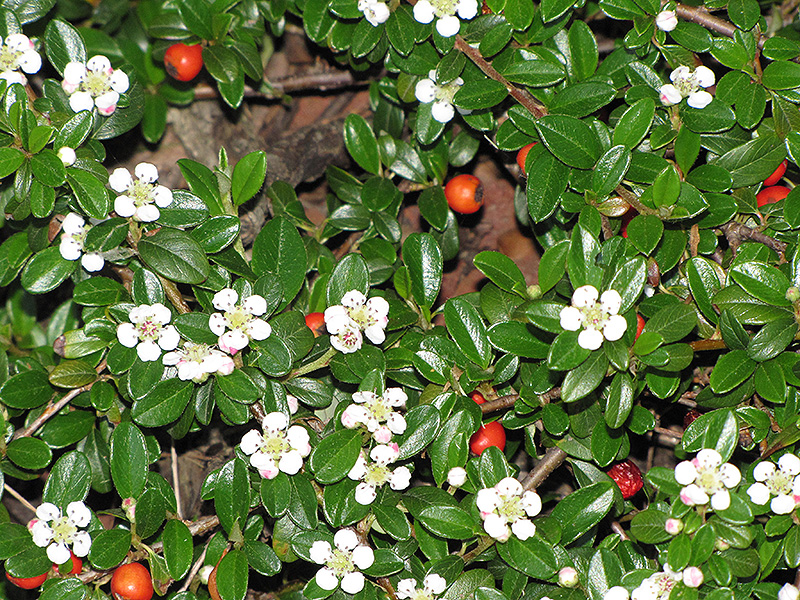Coral Beauty Cotoneaster
Cotoneaster dammeri 'Coral Beauty'
Height: 12 inches
Spread: 5 feet
Sunlight:
![]()
![]()
Hardiness Zone: 5
Other Names: Bearberry Cotoneaster
Description:
One of the best low spreading groundcovers, featuring white flowers in spring and showy coral pink fruit in fall. Very hardy.
Ornamental Features
Coral Beauty Cotoneaster is primarily grown for its highly ornamental fruit. It features an abundance of magnificent coral-pink berries from late summer to late fall. It features tiny clusters of white flowers along the branches in late spring. It has dark green evergreen foliage. The small glossy oval leaves turn an outstanding brick red in the fall, which persists throughout the winter.
Landscape Attributes
Coral Beauty Cotoneaster is a multi-stemmed evergreen shrub with a shapely form and gracefully arching branches. It lends an extremely fine and delicate texture to the landscape composition which should be used to full effect.
This shrub will require occasional maintenance and upkeep, and should not require much pruning, except when necessary, such as to remove dieback. It is a good choice for attracting birds to your yard, but is not particularly attractive to deer who tend to leave it alone in favor of tastier treats. It has no significant negative characteristics.
Coral Beauty Cotoneaster is recommended for the following landscape applications;
- Mass Planting
- Rock/Alpine Gardens
- Border Edging
- Groundcover
Planting & Growing
Coral Beauty Cotoneaster will grow to be about 12 inches tall at maturity, with a spread of 5 feet. It tends to fill out right to the ground and therefore doesn't necessarily require facer plants in front. It grows at a fast rate, and under ideal conditions can be expected to live for approximately 30 years.
This shrub does best in full sun to partial shade. It is very adaptable to both dry and moist growing conditions, but will not tolerate any standing water. It may require supplemental watering during periods of drought or extended heat. It is not particular as to soil pH, but grows best in rich soils, and is able to handle environmental salt. It is highly tolerant of urban pollution and will even thrive in inner city environments. Consider applying a thick mulch around the root zone in winter to protect it in exposed locations or colder microclimates. This is a selected variety of a species not originally from North America.



